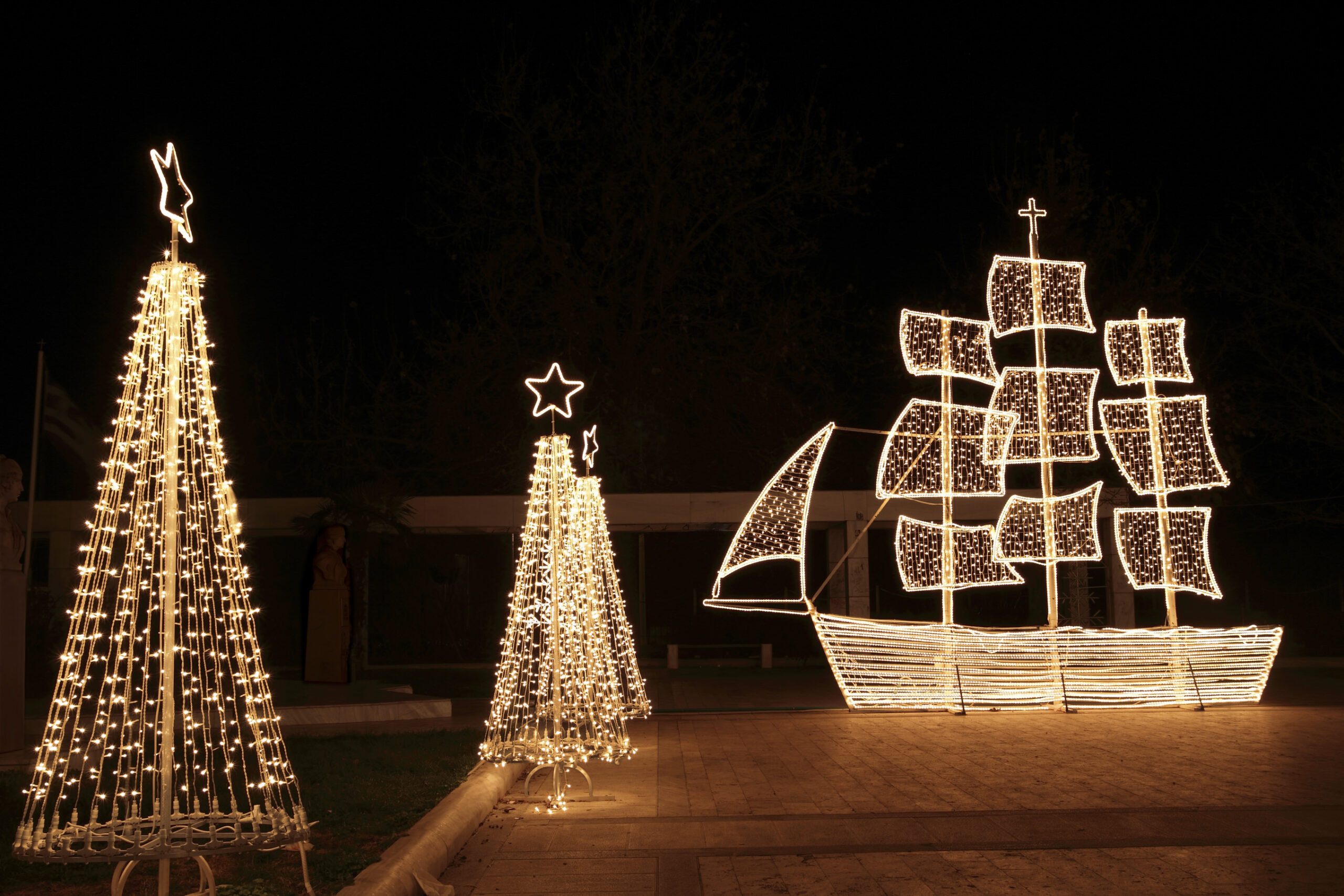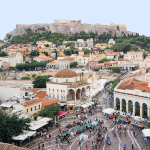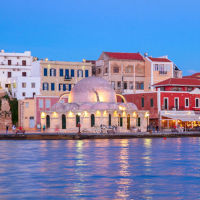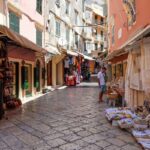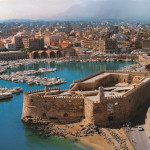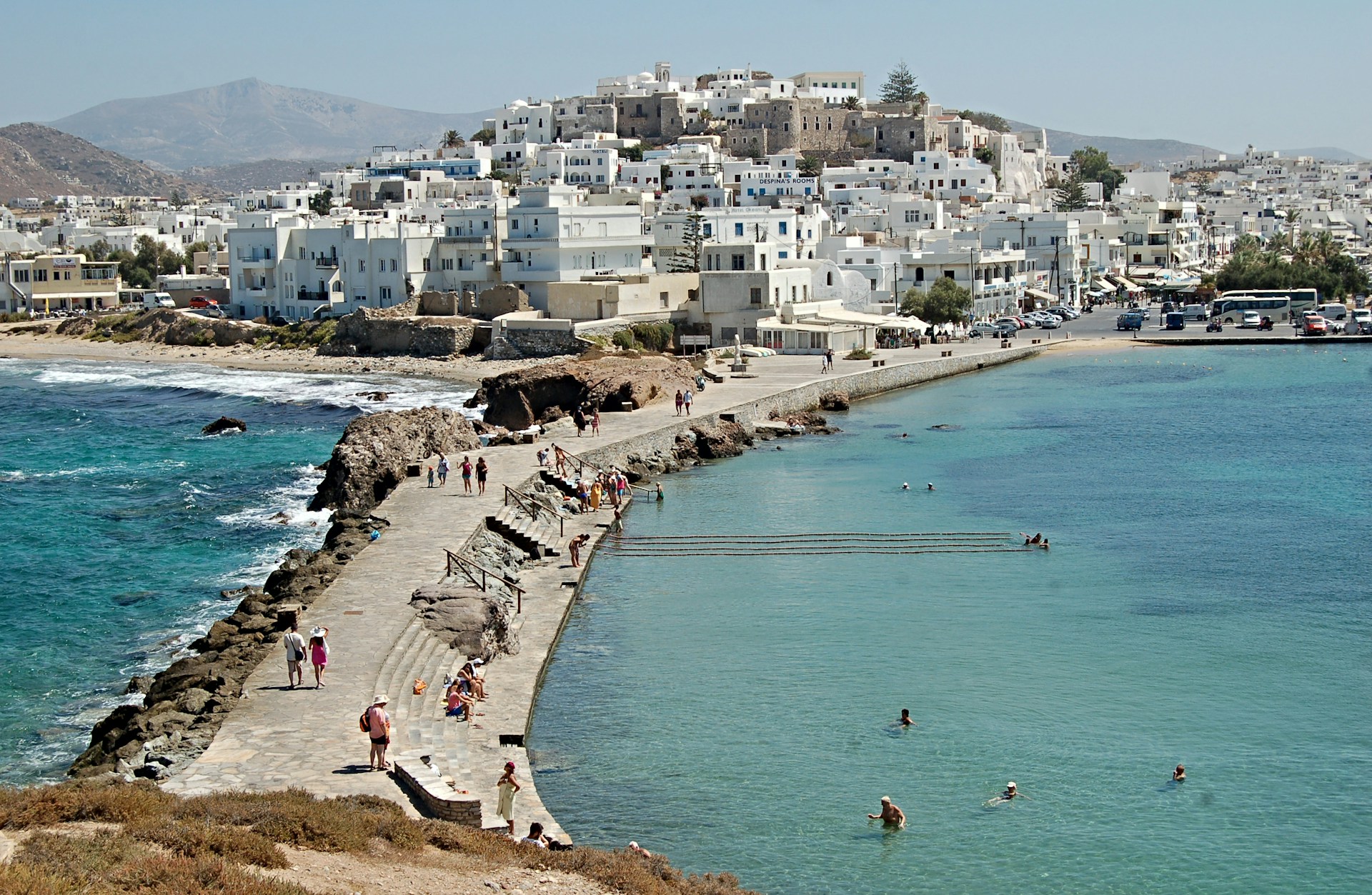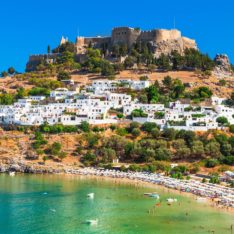START BOOKING YOUR TRIP TO
** Please note that we get a small commission if you book via our referral links. We use this to invest in new foodie content and to update the Greece Foodies website.
Welcome to our essential guide to Greek Christmas traditions. You will get to know some famous and not-so-famous Greek traditions!
One of the essential parts of Greek Christmas traditions is food. Traditional dishes include roast lamb, baked potatoes, spanakopita (spinach pie), and baklava (filo pastry dessert). Of course, no meal is complete without a glass or two of ouzo!
This time of the year wouldn’t be complete without music. Greek Christmas carols are sung in homes and churches throughout the country. And on Christmas Eve, it’s traditional for a band of carolers to go from house to house, singing festive songs. Open your door if you hear them asking “Na ta poume?”
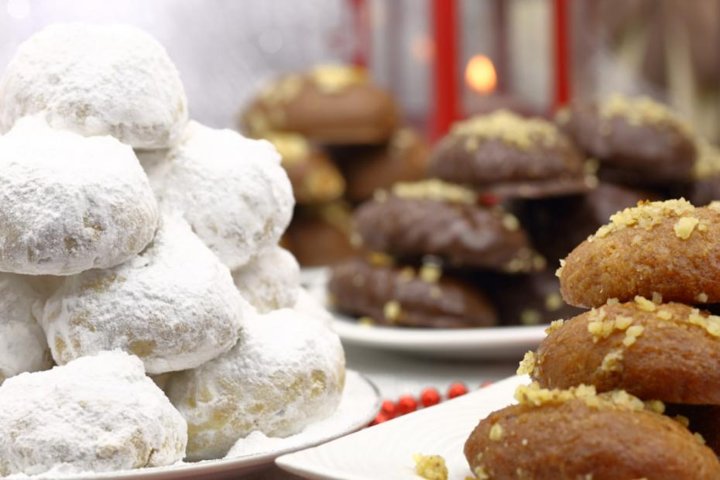
Athens Christmas Food Tour
Looking for a delicious and alternative way to experience the best of Athens? Join us on Athens Christmas food tour!
Greece is home to some of the world’s most beautiful Orthodox churches. And at Christmas time, they’re even more special, with their intricately decorated interiors and twinkling Christmas lights. Many Greeks will attend Midnight Mass on Christmas Eve, and then again on Christmas Day.
One of the most famous Greek Christmas traditions is giving lucky charms to children. These charms, which are usually made of silver or gold, can take the form of animals, crosses, or other symbols. They’re often given to children by their godparents after their Greek Christmas carols are sung and are meant to protect them from evil spirits.
The four most famous Greek Christmas traditions!
1. Christopsomo
Christopsomo (Greek Christmas bread) goes back to the Ottoman Empire and is now a traditional celebratory feast that is an essential component of Greek Christmas traditions. Though the decorating varies by location and is customized to depict the life and labor of the home, every Christopsomo has a cross formed of dough in the center and almonds and nuts sprinkled on top to indicate wealth.
By shaping the dough into sceneries from agricultural life (for example, animals, farms, and vineyards), housewives hoped to separate Christopsomo from conventional bread loaves and mark the unique event for Christmas in Greece. Christopsomo is consumed on Christmas Eve making every household love bread making!
2. Greek Christmas desserts
The most popular traditional Greek Christmas sweets are melomakarona (honey cookies) and kourabiedes (sugar-coated butter cookies). These delectable treats, made entirely of locally obtained ingredients, have been part of Greek culture since antiquity, according to Karamanes. The major components of melomakarona and kourabiedes are oil, honey, oranges, and almonds, all well-known in Greece. While these honey biscuits are now associated with Christmas, Greeks ate them as a daily treat in ancient times.
3. Vasilopita
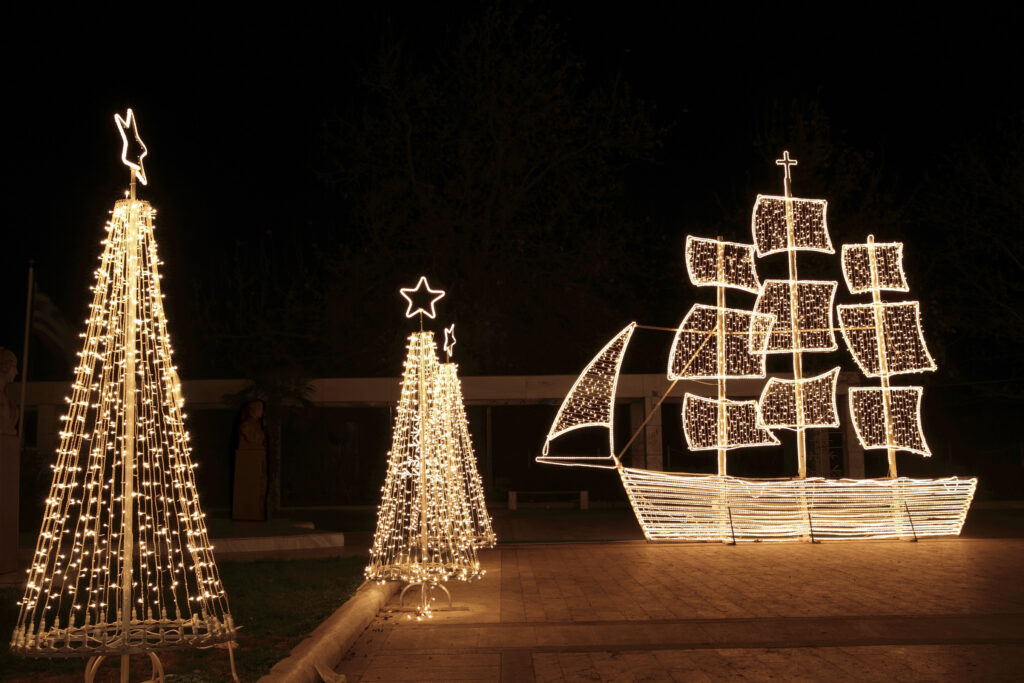
Vasilopita, which translates to Saint Basil’s pie, is a traditional New Year’s Day dish. Each Vasilopita includes a coin. The family’s head divides the pie into pieces, and whoever discovers the cash is considered to have a happy year. This ritual stems from the legend that citizens of Cappadocia gathered money and jewelry to pay a levy to the region’s oppressive governor.
Saint Basil persuaded the prefect to modify his mind and relieve locals from giving up their treasures. Because they didn’t know how to return the items to their respective owners, the villagers followed Saint Basil’s instructions and baked little pies. Saint Basil then placed the jewelry and money into the pies, and each individual magically obtained their possessions.
4. Christmas-decorated boats
A final Greek Christmas tradition that makes the country unique in Christmas holidays is the Christmas-decorated boats!
Otto, who ruled the kingdom from 1832 until 1862, placed the first Christmas tree in his palace in Nafplio. According to Karamanes, Christmas trees were only visible in upper-class families for the following several decades, and the ritual became universally popular after World War II.
Until then, decorating a small boat was more common in Greek houses. Greece has a rich nautical past as a maritime country, and the lit boat represents love and respect for the sea and the anticipation of meeting with seafaring relatives and welcoming loved ones home.
Three not so known Greek Christmas traditions!
1. Presents are exchanged on the 1st of January
Because the Christmas season lasts from Christmas Eve to the Epiphany on January 6, most Greeks typically wait until St. Basil Day on January 1 to exchange presents, however, many families now do it on Christmas Day as well.
2. Kallikantzaroi
The Kallikantzaroi are goblin-like creatures that arrive during the holiday season to attack good people. They are wicked spirits, and our world is linked to the underworld by a tree, according to the Greek version of a universal tale.
The Kallikantzaroi, or wicked spirits, spend the whole year under that tree, cutting their way into the outside world. They succeed and escape during the Twelve Days of Christmas, which last from December 25 to January 6.
During this time, the Kallikantzaroi appear on the earth since Christ has not yet been baptized and cannot defend humanity from evil.
During that time, the families are left unprotected. However, since the kallikantzaroi are scared of fire, people keep them at bay by burning logs, incense, and even old shoes.
3. Skeletoura
The squill (skeletoura in Greek) is a typical wild bulb that looks like an onion and is challenging to dig out from the ground.
Because the skeletoura grows after being dug up, it is seen as a sign of eternity. Its inclusion in New Year’s festivities is peculiar to Greece.
On New Year’s Eve, Greek families hang a skeletoura or set a pot with a bulb next to the entrance, then carry it inside to be preserved for the remainder of the year. It is supposed to provide longevity, health, and good fortune to everyone in the home.
Do you know any other Greek Christmas traditions that we could add to our guide? Could you share them with us in the comments?
